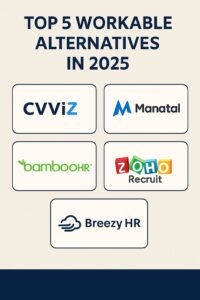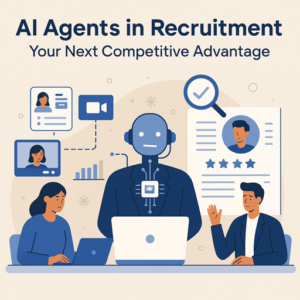The hiring process is an inevitable part of your company, and it’s up to you whether this impact will be positive or negative on your revenue. Leveraging this to your advantage is crucial, as a recent study conducted by Maddalena Ronchi and Bocconi University found that job vacancies can significantly hurt a company’s bottom line.
In-depth results revealed a 3% sag in profitability for firms facing ‘average’ levels of hiring difficulty, with negative dips increasing with further recruitment friction.
To maximize profit and minimize loss, it’s essential to understand how hiring affects company revenue and what strategies can be used to respond accordingly.
Company revenue and its building blocks
A company’s revenue is determined by how much money comes in, with gross income and profits all playing a role in the overall outlook. Income from products or services is then tallied against expenses to compute net profit. Onboarding new employees is a part of this computation as these contribute to the company’s costs. In addition, hired employees can impact costs through productivity-based performance, which determines any firm’s overall operations.
Revenue-based hiring has become a popular practice because hiring is a building block to revenue management. It starts with measuring your company’s scale and considering how much cost is divided among all employees. From there, it’s important to compare the revenue from past iterations of the workforce to the current slate featuring new hires. This helps inform leaders how hiring directly increases or decreases their income depending on the subsequent productivity and results of new hires.

How hiring good candidates affects company revenue
One of the main reasons a good candidate is worth the investment is that they bring skillsets that can increase your company’s value over time. As good workers successfully hit your organization’s goals, maintaining operations with financial gains is more manageable and smoother.
Additionally, effective hiring minimizes your turnover rate. SHRM research found that hiring a new full-time employee costs $4,700. It’s worth taking the time in the screening process so you eventually get your money back through the employee’s work contributions. Another huge reason to be wary is the cost of hiring an entirely new person to fill the role (especially at the last minute). Experts note how, on average, the cost of replacing an employee can soar to up to twice as much as the former employee’s annual salary.
Finally, the effectiveness of your hires also reflects on your company and its quality. It’s much harder to redeem yourself to a spurned audience than it is to grow loyalty from scratch. If your hiring process results in a deficit of resources to produce quality work or services, you hurt your overall revenue by turning away consumers.
Stumbling blocks in the hiring process and the bottom line
Although you can expect to face certain stumbling blocks during the hiring process, there is often a misconception that not much can go wrong before you’ve handed over a full-time contract.
When you mismanage your hiring, you end up with underqualified candidates, employment gaps, and potentially burnt-out reliables because they have had to pick up the slack.
In global contexts, this becomes even more complex—especially when hiring across borders where employment laws vary. Some companies turn to global employer of record services to help navigate these challenges, particularly when they need to onboard talent in countries where they don’t have a legal entity. Whether local or international, inefficient hiring processes can lead to costly gaps, lowered productivity, and long-term impacts on company performance—all of which directly affect the bottom line.
And as mentioned above, these factors can all hurt your bottom line. The longer you operate with a lack of resources, the more risk you put on your revenue to keep bleeding out. All too often, potential hires and those in charge of the hiring process are also led astray by misrepresented statistics.
If you look at the recruitment piece by Tricentis director Jan Tegze, a study conducted by Harvard Business School found that a majority of employers vet out high-skill candidates who do not match their stringent role requirements. Many following pieces unwittingly attributed this statistic to a claim that many qualified hires get overlooked by resume systems because their qualifications don’t meet some stringent standards.
When issues like this trickle over into the landscape, it only makes hiring harder. HR leaders are following through on misguided statistics while potential hires are taking themselves out of the active pool due to the assumption that they would not be considered in the first place. Vacancies need to be filled swiftly, but this process needs to be done mindfully if it will have any meaningful and positive impact on the bottom line.
How to improve overall hiring strategy for higher revenue
One of the best ways to improve your revenue strategically is to analyze how your specific business model and hiring process tie into it. An excellent way to do this is by streamlining data and keeping a clear timeline of profits, policies, and hires to calculate the best approach for what’s available. Softrax’s revenue recognition solution accomplishes this by using back-office automation to provide a greater visibility of business performance. For those in charge of hiring, this should be used to examine the conditions of the company and how many employees are accounted for when any profit or losses are made. Such a solution can also be used to maintain overall business efficiency and consistency since it eliminates the need for unreliable spreadsheets that can potentially be misrepresented.
The numbers don’t lie, so it’s crucial to know your data set if you’re going to make better hiring decisions for your company revenue. As digitalization encroaches upon us, you must futureproof other HR technology aside from adopting new systems. When you look at PwC’s survey of HR and tech, it’s clear that modernizing systems is a significant hurdle that must be overcome to retain talent, improve hiring, and successfully use insights to upskill and improve the team. One way to revamp the hiring process is to use tools like AI recruiting software to help discover and connect with relevant candidates.
From there, you must reassess your job descriptions to meet evolving industry standards and new candidates. Even passive candidates can be a worthy investment, with social media platforms and conferences inviting a wider pool of talent with highly skilled individuals you can engage. Finally, it’s crucial to consistently perform a gap analysis to ensure that employees and candidates meet competency requirements. When you find the pitfalls that need upgrading, you can more effectively change protocols, training, and job descriptions to accurately portray what your business needs.




